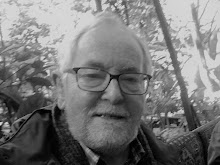Advent Reflection
I think I always approach Christmas with a sense of
failure. I start Advent with Great Expectations, and then - things happen. But this
calendar year has been good. Has it given me any insights?
Certainly our pilgrimage to the Land of the Holy One has
given a renewed emphasis on the grounded-ness, even the earthiness, of the
events of the Incarnation. It’s not just that the places we sing carols and
read lessons about actually exist (though that is not unimportant.) It’s also
that we experienced just a little of the pain, frustration and sorrow of Palestinians
living under a frequently arrogant occupation, And that is a reminder that
similar feelings prevailed in that same country in 4 BC (or whenever). God did
not choose a happy smiling place to be born in! He is still active and bringing
change in dark and hurting places.
I’ve also been struck in a fresh way about the importance
of the Advent season. That has often been manifested in a grumpy old man’s
complaining that Christmas starts too soon, and we’re singing carols when we
should still be using ‘O come, o come, Emmanuel’ or the Advent prose. Forgive
the grumpiness - but Advent has its own message. It’s about expectation – and hope, which I increasingly believe is
even more important than faith and love. For without that hope for the future
we cannot bear the pain and darkness of much of life.
The experiences of Palestinian Christians reminded us of
the similar feelings we heard expressed by Sri Lankan Tamils when we were
leading clergy retreats there in 2007. There seemed to be little hope. Would
things ever get better?
Humanly speaking, it often is hard to see signs of hope;
and there’s where faith and the Advent prophecies are so important. I believe
Christians are called to be bearers of hope in and to our world and especially
for people who find it hard to see there is hope. We must not do that in a
fatuous or trivial sense, but by affirming that the incarnation, particularly
because of its setting, gives us reason to hope. God does not give up on his
world, and gets involved in the most unexpected and unlikely places. David
Jenkins once summarised the Christian message as: ‘God is, as he was in Jesus,
and so there is hope.
If we are not bearers of hope, we have little to offer
the oppressed, the dispossessed, the broken-hearted, the lonely and the
terminally ill, apart from our sympathy. But in fact, Advent reminds us we can
wholeheartedly offer them hope; the hope of a God who comes, a God who loves us
unreservedly.
Finally this year has reinforced the experiences we have
been blessed in having in the past, that the Church really is a world-wide and
universal communion. Christians can and do meet and pray together despite social,
ethnic and other differences. Week by week, throughout the world worship is
offered in many widely distinct cultures and languages. And that is the point.
As we look for the coming of the Kingdom we already enjoy being part of that
fellowship, ‘that great multitude that no-one could count, from every nation,
tribe, people and language.’
The child whose birth to Mary and Joseph - far from their
home, in an animal shelter in an obscure town in an occupied province - we
shall shortly be celebrating was born to bring comfort and hope for all people;
he was and is and eternally will be ‘a light for revelation to the nations.’
Amen. Even so, Come Lord Jesus!

